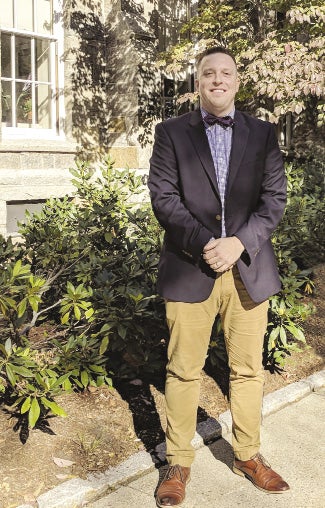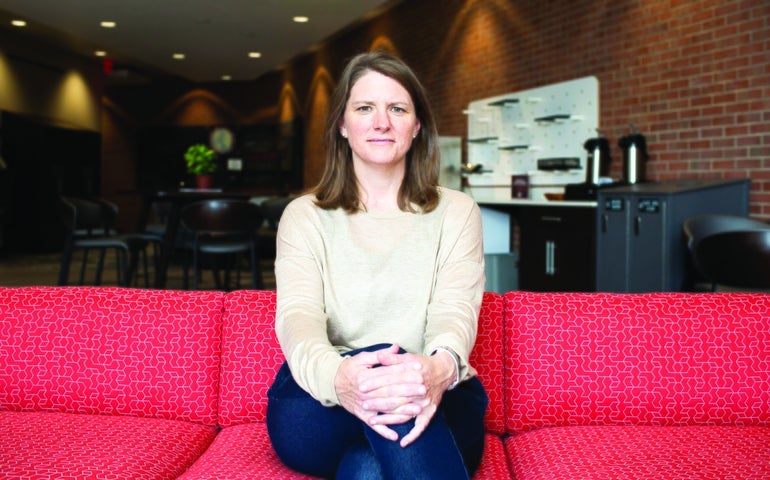Even as standardized tests try to regain some of their lost luster, nearly all Central Massachusetts colleges have found more holistic ways to assess applicants’ potential and aren’t looking back.
“Tests weren’t the most reliable factor,” said Meredith Twombly, vice president of admissions and financial aid, at Clark University in Worcester, which went test optional in 2014.
This year, the College Board – the not-for-profit administering the SAT standardized test – rolled out its new Environmental Context Dashboard in order to factor in students’ socioeconomic status. This effort comes as more colleges are eschewing standardized test scores altogether in their admissions process, preferring to evaluate applicants on a host of factors.
Of the 12 Central Massachusetts colleges and universities who have historically used the SAT, nine have since become test optional: Clark, Worcester Polytechnic Institute, College of the Holy Cross in Worcester, Fitchburg State University, Nichols College in Dudley, Dean College in Franklin, Worcester State University, Assumption College in Worcester and Anna Maria College in Paxton.
“We are at a critical point in higher education,” said Andrew Palumbo, dean of admissions and financial aid at WPI. “Enough is known about the subjective nature of standardized testing and its negative correlation to social inequalities.

“We realized we had better tools to predict success,” Palumbo said.
Test-optional colleges
The college admissions process around the country is making the switch to being test optional. More than 1,030 U.S. college and universities are test optional, up from about 850 in 2015, according to FairTest, the national center for fair and open testing.
Twombly said socioeconomic, racial, and cultural biases in standardized testing create weaknesses to tests like the SAT and its cousin the ACT, which is why Clark stopped relying on them. She said someone is creating the test and inserts their own biases. It is impossible for the test, therefore, to be as objective as it claims to be.
The College Board’s own data shows SAT scores correlate to wealth, gender, and race. Traditionally marginalized groups are further disadvantaged by tests like the SAT and ACT.
“From our perspective, it is less accurate than our team of trained admissions officers … and a clumsy tool,” said Twombly. “Students want their applications read as seeing them as a human and being read by a human.”
Clark instead uses the school report submitted with applications and employs extensive admissions officers training.
School reports include comprehensive context from the high school about everything from offered curriculum, average scores and GPAs, to even the percent of students on federal lunch programs, Twombly said.
Though Clark applicants can still submit test scores, “they play a very small role…[and are] 5% or less of admission’s thinking,” said Twombly.
WPI in 2009 became the first test-optional technical school. WPI wanted to give its applicants more of a fair shake, Palumbo said.
“Standardized tests are problematic as a gatekeeper to higher education,” said Palumbo, further emphasizing the socioeconomic, gender, and racial biases Twombly mentioned exist in the test.
Clark and WPI are two of many schools using a holistic approach, looking at all of the pieces of an application and the unique characteristics of each individual, with a focus on GPA.
The context in which a student lives is extremely important to their application, Palumbo said.
“We care more about who you are and what you’ve done in the past four years than in the four hours of a test,” said Palumbo.
Environmental Context Dashboard
Within this changing admissions landscape, the College Board is hoping to use the ECD to level the playing field for applicants. The ECD attempts to standardize and quantify the aspect of context for different students to help admissions officers.
The ECD does not alter a student’s score nor does it take into account any personal characteristics of the student. However, it does show how students’ scores compare to those in their schools and aims to give admissions officers better context about an applicant’s neighborhood and school system.
In the 2018-2019 admissions process, College Board piloted the ECD with more than 50 colleges and universities. It plans to include more than 150 colleges this fall and later to make it broadly available for free.

“The Environmental Context Dashboard shines a light on students who have demonstrated remarkable resourcefulness to overcome challenges and achieve more with less. It enables colleges to witness the strength of students in a huge swath of America who would otherwise be overlooked,” said David Coleman, the CEO of the College Board, in a public statement.
However, Twombly said the ECD is a simple, elegant, and crude proxy for quantifying context.
“The ECD is trying to create an objective measure of context,” said Palumbo.
For WPI, its trained individuals can perform the same task as the ECD and, in Palumbo’s opinion, are more effective at it.
Though the ECD’s goals are admirable to Palumbo, he – like Twombly – said the ECD is trying to quantify an aspect of life unfit for numerical data.
The ECD has been criticized for its lack of transparency about the factors going into it and the fact students and high schools are not allowed to see a student’s ECD.
“Scores that affect students’ futures require transparency, validity and fairness. The algorithm and research behind this adversity score have not been published. It is basically a black box,” said ACT CEO Marten Roorda, in an email.
Where do colleges go from here
Schools like Framingham State University still requiring standardized test scores in admissions are struggling on how to use the ECD.
“At this time, the university is taking a wait-and-see approach to the SAT’s new Environmental Context Dashboard,” said Jeremy Spencer, Framingham State University’s dean of enrollment management, in an email. “The university recognizes and appreciates varied student backgrounds throughout the enrollment process, and welcomes the opportunity to research how the Environmental Context Dashboard fits into this understanding.”
For schools that are already test optional, the ECD is redundant. Neither WPI nor Clark plan to use it.
“We’re getting pretty good environmental context from [the school report] alone,” said Twombly.
At a smaller school like Clark, admissions officers can spend time on every application. However, the ECD could be helpful for larger institutions without the time to read through with more than 20,000 applications a year, Twombly said.
After years of the College Board claiming the SAT’s objective nature, it finally has leaned into the fact the tests don’t measure innate qualities, like Clark and WPI already know.
“For decades the College Board said the SAT alone is the best unbiased, objective indicator of success and likened it to an equalizer,” said Twombly. “The creation of the ECD is the SAT proving the point they have been denying.”

